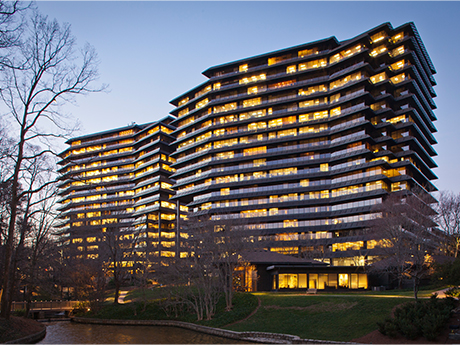LONDON — The U.S. office market is in need of time and sustained levels of leasing activity to overcome the robust amount of space given back since the COVID-19 pandemic, concludes Savills’ third-quarter “State of the U.S. Office Market” report.
If the third quarter is any indication, the U.S. office market is beginning its long road to recovery. According to Savills, the market recorded 57.7 million square feet of leasing activity this past quarter, which is a nearly 19 percent increase from 48.6 million square feet in second-quarter 2024 and a 25.4 percent increase from 46 million square feet in third-quarter 2023.
The third-quarter 2024 total represents the largest quarterly leasing volume since the pandemic, according to Savills. The firm also projects that this year is on track to have the most office leasing activity since 2019, surpassing the previous post-pandemic high of 205.8 million square feet recorded in 2022.
Additionally, the amount of available sublease space is on the decline. Sublease space on the market totaled 164.7 million square feet at the end of the third quarter, a 6.6 percent decrease from 176.4 million square feet in third-quarter 2023. Savills reports that sublease availability has declined for four consecutive quarters.
The London-based commercial real estate services firm reports that other market indicators are also trending positive. For instance, year-over-year employment growth in office using sectors — namely information, financial services, and professional and business services — remains positive, though it is cooling from previous points in the post-pandemic era. Overall, total office-using sectors increased employment by 0.2 percent from October 2023 to October 2024, according to analysis of U.S. Bureau of Labor Statistics data.
Also, asking rental rates averaged $42.68 per square foot at the end of September, a slight increase from $42.20 a year ago. The improvement is a touch more pronounced in Class A office space, which stood at $46.31 per square foot in third-quarter 2024 compared to $45.58 in third-quarter 2023.
Savills points out that asking rental rates haven’t dropped primarily because office landlords are offering generous concessions rather than drop their base rents.
One notable trend is that suburban office product is now tighter than those in central business districts (CBDs), which is a reversal from historic norms, though both are much elevated since pre-pandemic times. According to Savills, the availability rate in CBDs is at 25.9 percent, up 1,210 basis points from December 2019. Suburban office availability is slightly tighter at 25.3 percent, which is a 620 basis-point increase from before the pandemic.
Savills notes that since 2019, suburban office leasing activity has steadily outgained CBD leasing activity every year, with 2024 being no exception.
Available space remains elevated, especially in ‘tech-centric markets’
One notable trend in the negative direction is the amount of available space on the market, despite the increase in leasing activity. The overall U.S. office market inventory stands at 3.7 billion square feet, which is a 10 million-square-foot increase year-over-year, according to Savills research.
Of that inventory, more than a quarter (25.6 percent) is defined as available for lease or sublease, according to Savills. This is a 100-basis-point increase from third-quarter 2023 when the availability rate hovered at 24.6 percent.
Savills notes that the primary reason why office space remains stubbornly available is that office users are becoming more calculated in how they utilize space and that hybrid work models are here to stay.
“As occupiers become more efficient in space utilization, it will take time and sustained leasing activity to offset the amount of space returned to the market since the onset of the pandemic,” the Savills author writes.
Another trend is that available office space in what are considered “tech-centric” markets outpaces the national average. According to Savills, the availability rate for San Francisco is at 36.6 percent, Austin is at 29.3 percent, Seattle/Puget Sound is at 28.2 percent and South Bay/San Jose is at 27.6 percent.
The availability rate is even more stark when compared to pre-pandemic levels. Overall, the U.S. office market’s availability rate moved up 880 basis points from fourth-quarter 2019 to third-quarter 2024. San Francisco’s availability rate meanwhile increased by 2,710 basis points, followed by Seattle/Puget Sound (1,650 basis points) and Austin (1,550 basis points).
Savills points out that markets whose availability rate increases are below the national average tend to be in the Sun Belt or those that have had limited new construction.
Available sublease space is also above the national average in those tech markets, with South Bay/San Jose leading the pack. According to Savills, the Silicon Valley office market’s available sublease space as a percentage of total available space is at 31.1 percent, which far outstrips the national average of 17.4 percent. Other tech markets have similar sublease availabilities, including San Francisco (25 percent), Austin (22.8 percent) and Seattle/Puget Sound (20 percent).
— John Nelson


